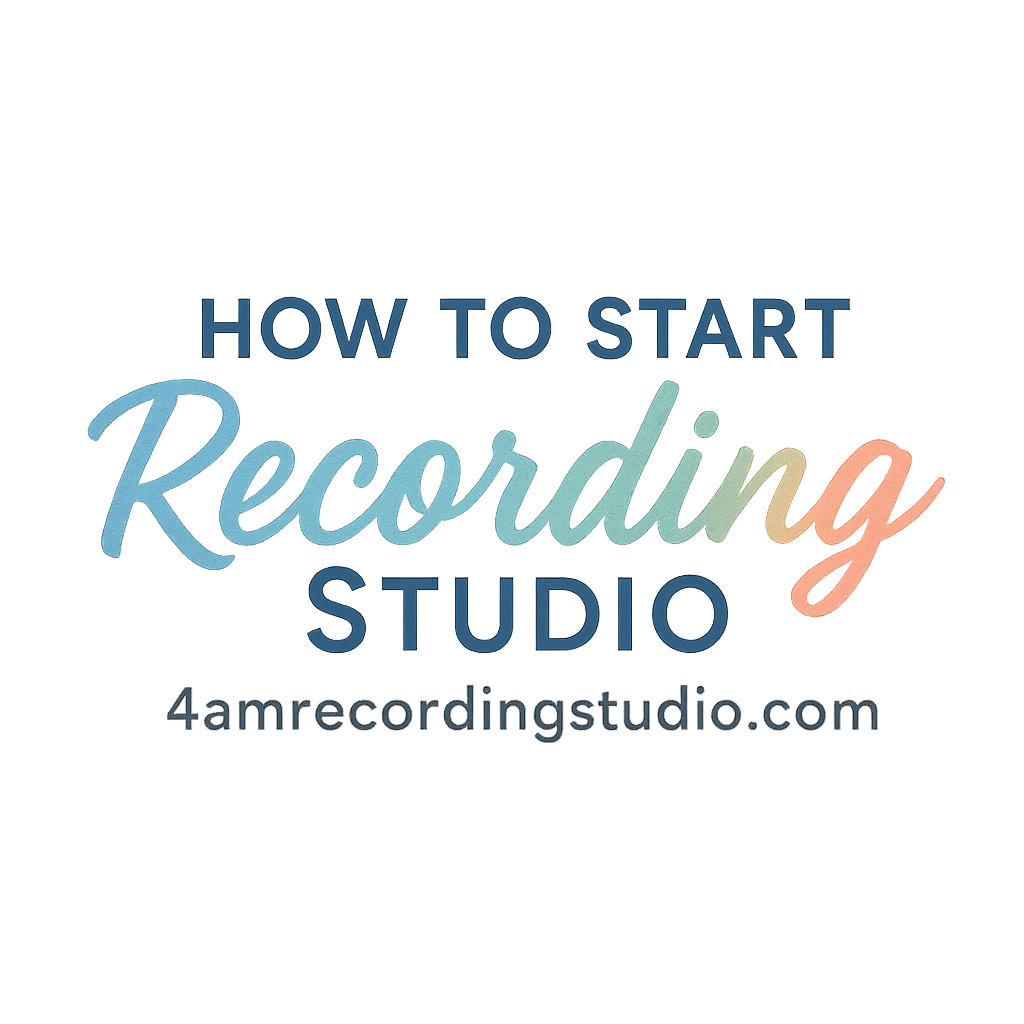Starting your own studio? That’s awesome—but let’s talk about something that can make or break your recording quality: soundproofing. It doesn’t matter how expensive your gear is—if outside noise leaks in or your music leaks out, your studio experience is going to suffer.
In this guide, I’ll break down 7 killer soundproofing hacks that’ll help you build a noise-free zone without tearing down your whole house. Whether you’re a beginner or going pro, this one’s for you.
Why Soundproofing Is a Must-Have
Soundproofing vs Acoustic Treatment
People mix these up all the time. Soundproofing keeps unwanted noise out (and your music in), while acoustic treatment deals with sound inside the room (like echo and reverb). For this post, we’re focused on keeping things quiet.
Common Noise Issues in Home Studios
Here’s what we’re fighting against:
- Traffic and neighbor noise
- HVAC systems
- Footsteps from the floor above
- Your own sound escaping and disturbing others
Let’s fix all that, shall we?
1. Choose the Right Room First
Room Shape and Size Matter
If you haven’t started building yet, start smart. Go for a rectangular room. Odd-shaped or tiny boxy rooms are a nightmare for both acoustics and soundproofing.
Avoid Rooms with Shared Walls
If your studio shares a wall with your neighbor or family room, expect complaints. Choose a room isolated from the rest of the house, like a basement or garage.
✅ Related resource: Recording Studio Setup Basics
2. Seal Doors and Windows Tight
Weatherstripping Works Wonders
Tiny air gaps? Yeah, sound LOVES those. Use weatherstripping around doors and windows to stop sound in its tracks. It’s cheap and effective.
Use Acoustic Door Seals and Door Sweeps
Add a door sweep at the bottom and acoustic seals around the frame. The more airtight your door, the less noise gets through.
3. Mass-Load Your Walls
What Is Mass Loaded Vinyl (MLV)?
MLV is a dense but flexible material that you can hang on your walls to drastically reduce sound transmission. It’s a go-to material in the soundproofing world.
How to Install MLV for Maximum Effectiveness
You can screw it directly to the wall or sandwich it between drywall layers. Add green glue between layers for an extra sound-deadening punch.
💡 Explore studio gear: Recording Studio Equipment & Tools

4. Build a Room Within a Room (If You Can)
Understanding the Decoupling Technique
This is the holy grail of soundproofing. The idea? Build new walls and floors that don’t touch the existing ones—this stops vibrations from transferring.
DIY Friendly Alternatives to Full Builds
Can’t afford a full rebuild? Try resilient channels or sound isolation clips to “decouple” drywall from the studs. Still very effective and more budget-friendly.
🏗️ Business planning for studios? Check Recording Studio Business Planning
5. Use Thick Carpets, Rugs, and Curtains
Soft Materials Absorb Sound
Carpets and rugs aren’t just cozy—they’re sound’s worst enemy. Layer thick ones on floors to absorb impact noise like footsteps or dropped gear.
Layering Makes a Big Difference
Double up on curtains over windows. Use heavy drapes or even moving blankets to trap sound and keep it from bouncing around.
6. Treat the Ceiling and Floor
Soundproofing the Ceiling
If your studio is under a living space, you’re gonna hear every footstep. Install acoustic panels, soundproof insulation, or even a secondary drywall ceiling to minimize this.
What to Do About Noisy Floors
On hardwood? Toss down thick underlays and carpets. You can even float a floor using rubber pads if you’re going full pro.
🎯 For growth tips: Recording Studio Management & Growth
7. Plug the Hidden Holes (Air Vents, Outlets, Cracks)
Use Putty Pads for Outlets
Electrical outlets and light switches are sneaky noise paths. Slap acoustic putty pads behind them to keep sound out.
Foam Sealant for Cracks and Gaps
Use acoustic caulk or foam sealant around baseboards, vents, or any gaps. Remember: sound is like water—it flows through every opening.
🔌 Explore: Recording Studio Setup Basics
Bonus Tip: Use a White Noise Generator
Masking Sound Rather Than Blocking It
Sometimes, total silence isn’t possible. Use a white noise machine or ambient sound track to mask background noise. It doesn’t block sound, but it sure makes it less noticeable.
Final Thoughts
You don’t need to be a construction expert or throw $10K at your walls to build a quiet, pro-sounding studio. With a few smart moves—like sealing up gaps, adding mass, and choosing the right materials—you’ll keep the sound where it belongs.
Soundproofing might not be the sexiest part of studio setup, but it’s definitely one of the most important. Do it right, and you’ll enjoy clean, crisp recordings and happy neighbors.
Looking for more? Dive into these helpful resources:
- Recording Studio Setup Basics
- Recording Studio Equipment & Tools
- Recording Studio Marketing & Branding
And don’t forget to explore more on these tags for deep-dive content:
beginner, setup, how-to-start, recording-studio
FAQs
1. Can I soundproof a room without construction?
Yes! Use rugs, curtains, weatherstripping, and acoustic panels to make a big impact without knocking down walls.
2. What’s the cheapest soundproofing hack?
Sealing doors and windows with weatherstripping is dirt cheap and works great.
3. Is foam good for soundproofing?
Not really. Foam is for acoustic treatment, not soundproofing. You need mass and density for blocking sound.
4. Should I soundproof the ceiling?
If there’s noise from above (footsteps, voices), then absolutely. Use insulation and secondary drywall layers.
5. Do I need both soundproofing and acoustic treatment?
Yes! They solve different problems. One blocks sound, the other improves sound inside your studio.
6. Can I soundproof vents?
Yes, but you’ll need to maintain airflow. Use duct silencers or redirect the vent through a sound maze.
7. How thick should walls be to block sound?
Ideally, use two layers of drywall with soundproofing materials like MLV and green glue in between.
